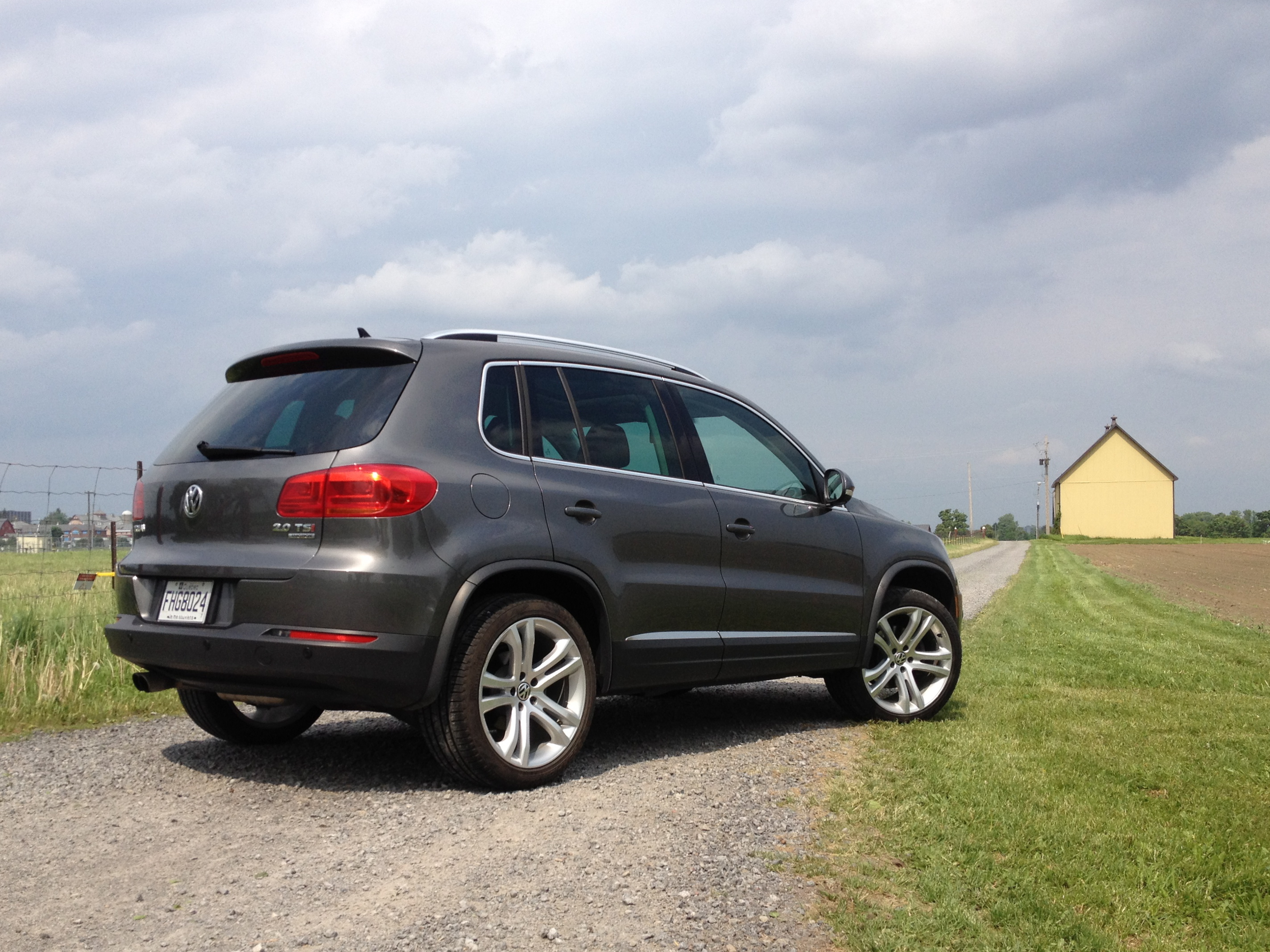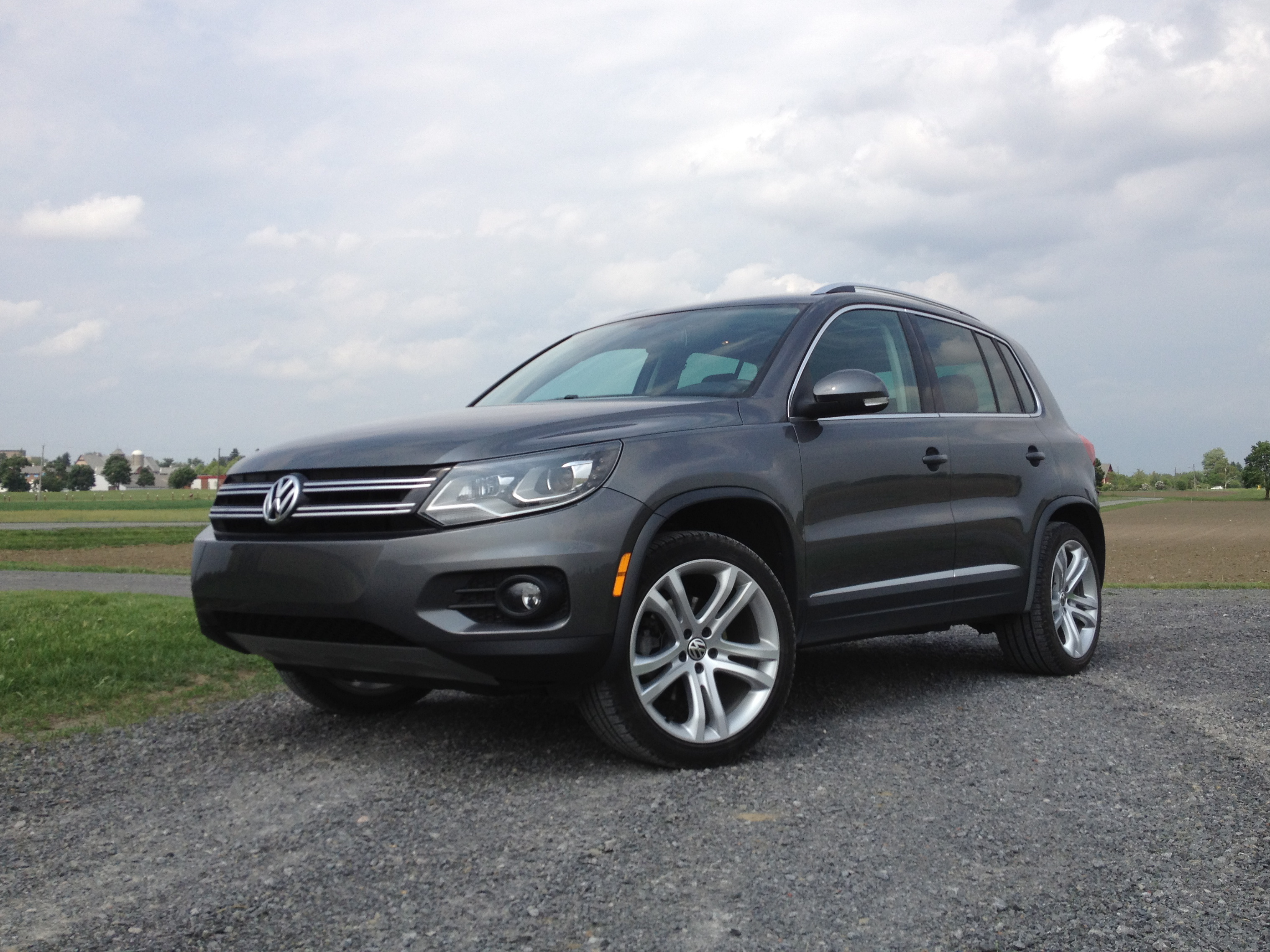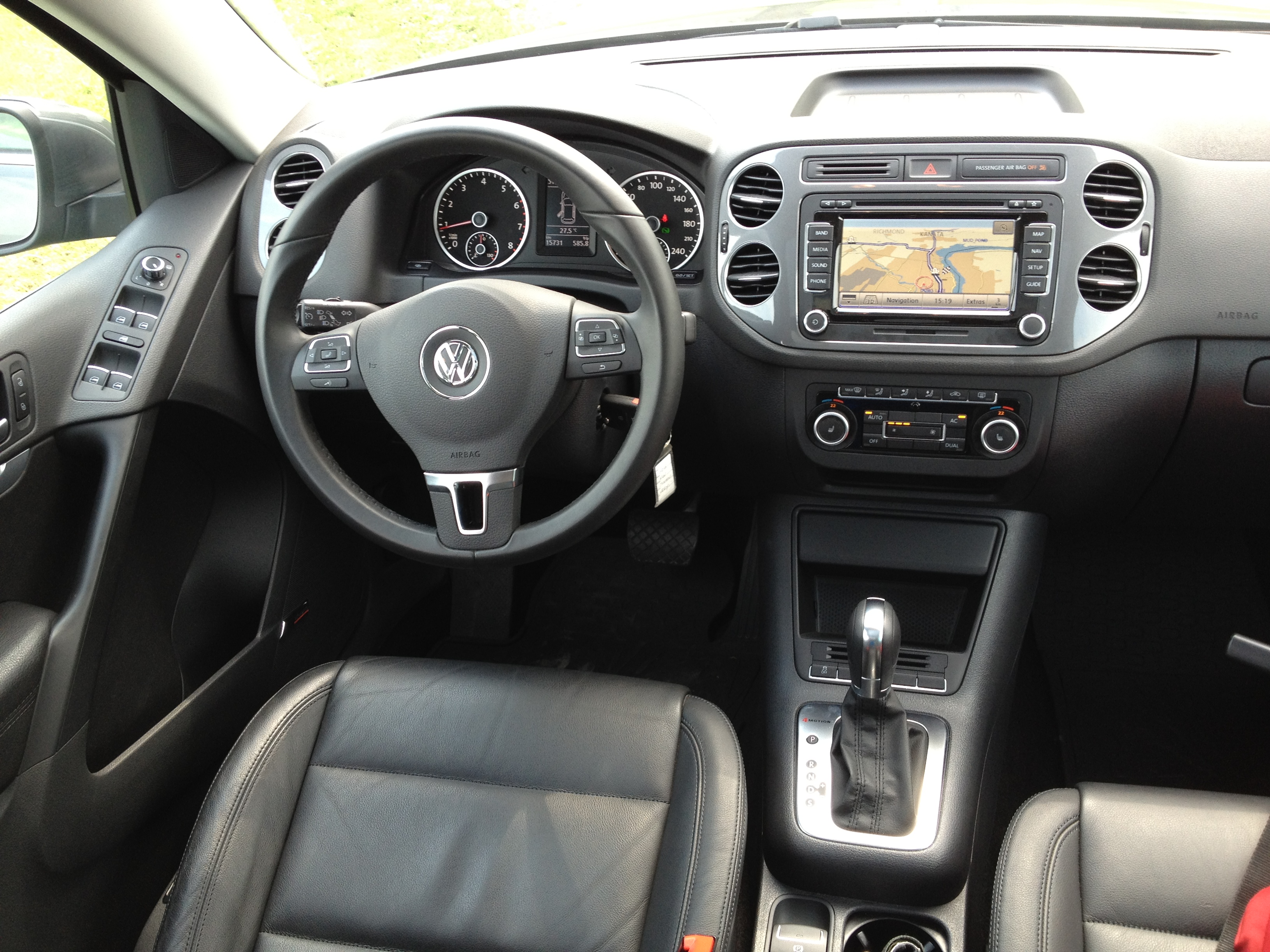 Story and photos by John LeBlanc
Story and photos by John LeBlanc
Warning: If you have offspring in the range of 10 to 12 years of age in your household, you have what social experts call a “tweener,” kids caught between early childhood and adolescence. If you’re a Volkswagen dealer, you also have a tweener on your hands, the Tiguan crossover. Like those tweener children, the Tiguan is between two norms. On one hand, other compact crossovers — such as the Japanese rival Honda CR-V — offer more room and cost less to get into. On the other, when optioned to the max like my top-line Highline 4Motion model, the Volkswagen comes close in price to rival German brand cute-utes, such as the BMW X1 or Mercedes GLK. But ask any tweener: being different has merit.
You don’t have to be a genetic engineer to unlock the Vee-Dub crossover’s DNA. Introduced in 2009, its maker describes the Tiguan as “50 per cent car, 50 per cent SUV, 100 per cent fun!” Like many in its class, the small crossover is the marriage of a compact hatchback chassis (in this case, the German automaker’s familiar Golf hatchback) with a taller body and the availability of all-wheel-drive. The five-passenger Tiguan is available in front-wheel drive for as little as $27,875. The top-rung Highline 4Motion starts at $38,375. A $2,300 technology package (navigation, Dynaudio 300-watt audio system/30-gig hard drive, rearview camera) and $1,900 sport package (19-inch alloy wheels/tires, bi-Xenon headlights, sport suspension) brought my tester’s final MSRP to $42,575. From an equipment standpoint the top-rung Tiguan is more inline with sporty-to-drive rivals like the $35,295 Kia Sportage SX and $36,840 Mazda CX-7 GT AWD. So the VW is not cheap. But the VW distinguishes itself inside.
If you appreciate traditional Teutonic interiors, such as those found in “old school VWs” (the Golf and Touareg), you’ll appreciate the Tiguan’s upscale cockpit. Like the Golf, the Tiguan is built in VW’s original Wolfsburg, Germany plant. That country’s highly-compensated automakers know how to screw a car together with the precision normally associated with dental equipment, making the VW feel about $10,000 more expensive inside than the Korean-built Kia and Japanese-made Mazda. The VW’s ergonomics are spot-on too. From the Tiguan’s supportive driver seat, the crossover’s cabin is a virtual facsimile of the Golf’s well-executed insides — even if you do sit a bit taller in the saddle. All of the driver touch points (steering wheel, shifter and pedals) are well-placed for spirited driving.

While the Golf can be had with a multitude of power sources (including a frugal, yet torque-rich turbodiesel), the Tiguan is solely powered by the Golf GTI’s turbocharged and direct-injected 2.0-litre four-cylinder gas engine. It makes 200 horsepower and 207 lb.-ft. of torque. You’ll notice that’s measurably less than the Kia’s 244 hp and 258 lb.-ft. ratings or the Mazda’s 260 hp and 269 lb.-ft. While VW’s quick-shifting six-speed Tiptronic gearbox scoots it from rest to 100 km/h in only 8.5 seconds, that’s still about a half-second behind the Mazda and a full two seconds shy of the Kia’s time. You’ll find the upside to the VW’s lack of oomph when you fill up. The Tiguan is rated at 9.8L/100 km in the city, 7.4 on the highway, a noticeable improvement over the Sportage’s 12.2/8.7 ratings.
The other challenge the tweener VW presents is interior space or lack thereof. Both the Kia and Mazda offer more rear cargo room. In fact, the Tig isn’t much roomier than the Golf hatch on which it’s based. The bonus from the Tiguan’s tidy dimensions are felt when it’s driven like a sports compact. The Tiguan really does drive like a taller GTI. German engineering is most obvious in the small crossover’s steering: It offers more feel than either the Sportage or CX-7 and bites into corners with more verve.
Everything isn’t perfect behind the wheel of the Tiguan. When left in “D,” its mandatory six-speed automatic (a manual gearbox is only available on front-wheel-drive Tiguans) is sluggish. You’ll need to slap the Tiptronic ‘box into Sport to get the most from that GTI engine. Lower-profile tires that come with the sport package deliver a sharp ride, something the new Jetta GLI suffers from as well. But just like tweeners, the Tiguan will grow up soon enough.

Like the transformation the current generation VW Jetta and Passat sedans have made, the next Tiguan (due around 2014) will probably be larger and may be built in North America, with the expected drop in luxury details found in European-made VWs. The Tiguan may not be the roomiest beast in its class nor the quickest. It also isn’t the least expensive. But it’s one of the last Volkswagens to offer that bank-vault feel missing in some of the newer models. If you like the VW Tiguan’s tweener qualities, you better act soon.
2012 Volkswagen Tiguan Highline 4Motion
WHAT I LIKED: Teutonic-quality interior furnishings and ergonomics, near-sports-compact-like steering, ride and handling, reasonable fuel economy
WHAT I DIDN'T: Other CUVs offer more space and power.
BASE PRICE/AS-TESTED: $38,375/$42,575
ENGINE: 2.0 L I4 turbocharged gas
POWER/TORQUE: 200 hp/207 lb.-ft.
TRANSMISSION: Six-speed automatic
FUEL ECONOMY L/100 km: 9.8 city; 7.4 highway; 8.9 as tested
COMPETITION: Kia Sportage SX, Mazda CX-7 GT AWD
Comments